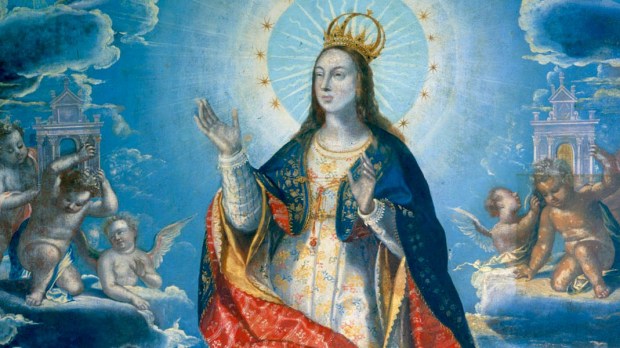For Renaissance and Baroque painters in Europe, lapis lazuli was like gold. This semi-precious stone was ground down and mixed with other substances to produce the rich ultramarine blue found in paintings like Rubens’ “Adoration of the Magi.”
But importing it from distant Afghanistan meant that only the finest of artists at the time had access to it.
In the New World, meanwhile, some painters’s works stood out for the stunning blues found in them. The azure tones were of a slightly different hue, however, and it’s not likely that they had access to lapis lazuli.
In the middle of the 20th century archaeologists discovered the Maya had discovered how to extract a brilliant blue from the añil plant, centuries before Columbus. Devon Van Houten Maldonado, writing at the BBC website, explained that such colors have not faded, even after more than 1700 years:
Archaeologists studying pre-Hispanic Mesoamerican ruins were surprised by the discovery of blue murals in the Maya Riviera, modern day Mexico and Guatemala, from as early as 300 AD, perhaps the most famous being the murals at the temple of Chichén Itzá (created around 450 AD). The color had a special ceremonial significance for the Maya. They covered sacrificial victims and the altars on which they were offered in a brilliant blue paint, writes Diego de Landa Calderón, a bishop in colonial Mexico during the 16th Century, in his first-hand account.
What puzzled archaeologists was the resilience of the blue. The añil plant, part of the indigo family, was widely available in the region but was mostly used for dyes rather than paint. Indigo was quick to fade in the sunlight and natural elements, the BBC explained, so experts mused that the Maya couldn’t have used the same widely available dye to paint the murals.
Enter attapulgite. Archaeologists discovered in the late 1960s that this rare clay was mixed with the dye from the añil plant to produce the rich blue “paint.”
Meanwhile, Americas painters were little by little distancing themselves from the European masters, and establishing their own native art. Second and third generation painters born in Mexico City, such as José Juárez and Baltasar de Echave Ibia, “departed from European aesthetics” in the early 17th century, but “arrived to something uniquely layered: enormous and sophisticated compositions that drew upon the full vibrancy of the New World.”
Baltasar de Echave Ibia even became known as “El Echave de los azules” (the Echave of the blues).
Where can the traveler see the use of this unique blue up close? At Mexico’s National Art Museum in Mexico City, works by Juarez show his development from a European impersonator to a New Spanish Baroque master. And in the dome of the cathedral in Puebla, one can admire Cristóbal de Villalpando’s depiction of the Blessed Virgin Mary, angels and saints amid swirling blue and purple clouds.

